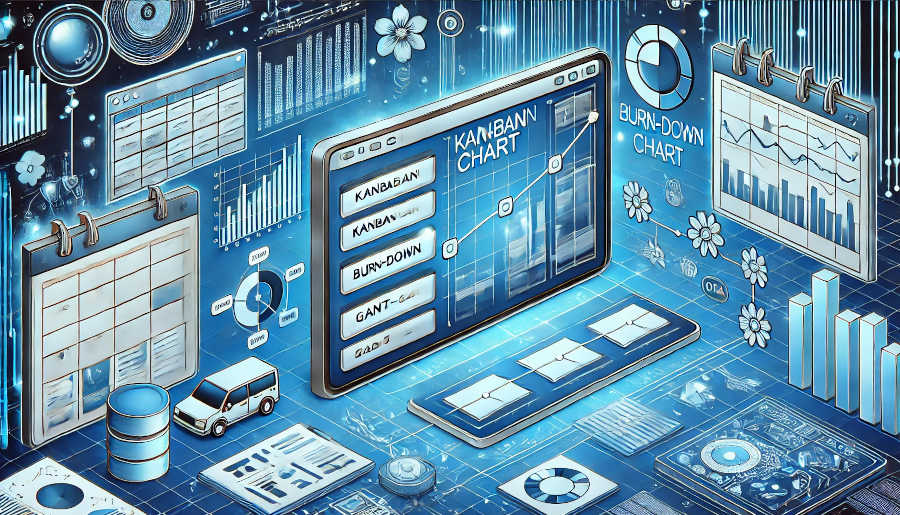Project change management is a crucial aspect of project management, especially when using project software. In the dynamic landscape of project execution, changes are inevitable. Whether it's a shift in client requirements, technological advancements, or unforeseen circumstances, these changes can have a significant impact on the project's scope, schedule, and budget. Project software serves as a powerful tool to manage these changes effectively, ensuring that the project stays on track and meets its objectives. Understanding how to perform project change management within the framework of project software is essential for project managers and teams. It allows for seamless communication, proper documentation, and efficient decision - making throughout the change process.
Understanding the Need for Change in Project Software
Change in project software can stem from various factors. Firstly, client needs often evolve over time. As the project progresses, clients may gain new insights or face external pressures that lead to modified requirements. For example, in a software development project, the client might initially request a basic user interface but later decide to add advanced interactive features. This change can have a domino effect on the project's design, development, and testing phases. Secondly, technological advancements can render existing project plans obsolete. New programming languages, frameworks, or tools may emerge, offering more efficient ways to complete the project. If a project is using an older technology stack and a more modern alternative becomes available, it may be necessary to change the software approach to stay competitive and meet quality standards. Additionally, internal organizational changes can also drive the need for change in project software. A restructuring within the company, a change in management priorities, or a new strategic direction can all impact the project and require adjustments to the software - based project plan.
When these changes occur, it's important to recognize that they can bring both opportunities and challenges. On one hand, a well - managed change can enhance the project's value, improve its quality, and better align it with the stakeholders' expectations. On the other hand, poorly managed changes can lead to project delays, cost overruns, and a breakdown in team communication. Therefore, having a structured approach to change management in project software is vital.
The Role of Project Software in Change Management
Project software plays a multifaceted role in change management. Firstly, it provides a centralized platform for communication. All stakeholders, including project managers, team members, clients, and sponsors, can access the software to view and discuss proposed changes. This real - time communication ensures that everyone is on the same page and can contribute their perspectives. For example, in a large - scale construction project, the project management software can be used to share design changes with architects, engineers, and contractors simultaneously. This immediate sharing of information reduces misunderstandings and promotes collaboration.
Secondly, project software helps in documenting changes. Every change request, its details, the rationale behind it, and the impact analysis can be recorded within the software. This documentation serves as a historical record of the project's evolution and is invaluable for future reference. In case of disputes or audits, the detailed change log in the project software can provide clear evidence of the decision - making process. Moreover, it allows new team members joining the project later to understand the context of the changes and how they have shaped the project.
Finally, project software enables effective tracking and monitoring of changes. Project managers can use the software's features to assign tasks related to the change, set deadlines, and track the progress of implementation. This ensures that changes are implemented in a timely and organized manner. For instance, if a change requires the development of new functionality in a software project, the project manager can use the software to create tasks for developers, testers, and quality assurance personnel, and monitor their progress until the change is fully integrated.
Change Management Process in Project Software
The change management process in project software typically involves several key steps. The first step is the change request submission. Stakeholders can submit change requests through the project software's dedicated interface. These requests should include detailed information such as the nature of the change, the expected impact on the project, and the proposed timeline. For example, a marketing team member might submit a change request to modify the product's packaging design in a consumer goods project. The request would detail how the new design is expected to attract more customers and the proposed date for implementation.
Once the change request is submitted, the next step is impact analysis. The project team, with the help of the project software's analytics tools, assesses the impact of the change on various aspects of the project, including scope, schedule, budget, and resources. This analysis helps in understanding the full implications of the change and making informed decisions. For instance, if a change in the manufacturing process is proposed in a production project, the impact analysis would determine how it would affect the production schedule, the cost of raw materials, and the skills required of the workforce.
After the impact analysis, the change decision - making process takes place. The project manager, along with the relevant stakeholders, reviews the impact analysis results and decides whether to approve, reject, or defer the change request. The project software provides a platform for this decision - making process, allowing for discussions, voting, and documentation of the decision. If the change is approved, the final step is implementation. The project manager uses the software to assign tasks, allocate resources, and monitor the progress of the change implementation until it is successfully completed.

Challenges in Project Change Management with Software
Despite the benefits of using project software for change management, there are several challenges that project teams may face. One of the main challenges is resistance to change. Team members may be accustomed to the existing project plan and may be reluctant to embrace new changes. This resistance can stem from fear of the unknown, concerns about additional workload, or a lack of understanding of the benefits of the change. For example, in a software development team, developers may be hesitant to adopt a new programming framework as they are familiar with the current one and fear that the transition will be time - consuming and difficult.
Another challenge is the complexity of integrating changes. In large and complex projects, changes in one area can have far - reaching consequences for other parts of the project. Ensuring that all the components of the project, as managed by the software, are updated and integrated correctly can be a daunting task. For instance, in an enterprise resource planning (ERP) project, a change in the inventory management module may require corresponding changes in the procurement, production, and financial reporting modules. Coordinating these changes within the project software's framework can be extremely challenging.
Finally, there may be issues related to data accuracy and integrity in the project software. If the software is not updated promptly or accurately during the change process, it can lead to incorrect information being used for decision - making. This can result in further problems down the line, such as incorrect resource allocation, missed deadlines, or budget overruns. For example, if the project software's cost tracking feature is not updated correctly when a change in the project scope occurs, it may give a false impression of the project's financial status.
Strategies to Overcome Change Management Challenges
To overcome the challenges in project change management with software, several strategies can be employed. Firstly, effective communication is key. Project managers should communicate the reasons for the change, the expected benefits, and the impact on the team clearly and repeatedly. This can help in reducing resistance to change. For example, by organizing team meetings, sending regular updates through the project software, and providing training on new processes or technologies, team members can be better informed and more likely to embrace the change.
Secondly, a detailed change management plan should be developed. This plan should outline the steps for handling changes, including the roles and responsibilities of each team member, the communication channels to be used, and the contingency plans in case of unexpected issues. By having a well - defined plan, the project team can be more prepared to handle changes and minimize the disruption caused by them. For instance, in a construction project, the change management plan would specify how changes in the building design would be communicated to different contractors, who would be responsible for implementing the changes, and what to do if the change causes delays.
Finally, continuous training and support should be provided to the project team. As new features or changes are introduced in the project software, team members need to be trained on how to use them effectively. This ensures that they can make the most of the software's capabilities during the change management process. Additionally, providing ongoing support, such as a help desk or a dedicated support team, can address any issues or concerns that team members may have while using the software for change management.
Conclusion
In conclusion, project change management in project software is a complex but essential process for the success of any project. The ability to manage changes effectively using project software can mean the difference between a project that meets its goals and one that fails. By understanding the need for change, the role of project software in change management, the change management process, the challenges involved, and the strategies to overcome them, project managers and teams can navigate the ever - changing landscape of project execution with greater confidence.
Project software provides a powerful set of tools for communication, documentation, tracking, and decision - making during the change process. However, it's important to be aware of the potential challenges such as resistance to change, integration complexity, and data accuracy issues. By implementing strategies like effective communication, detailed change management plans, and continuous training and support, these challenges can be overcome.
Ultimately, a well - managed change process in project software not only helps in adapting to the inevitable changes in a project but also enhances the overall quality, efficiency, and success of the project. It allows for better alignment with stakeholder expectations, improved resource utilization, and a more seamless project execution from start to finish. As projects continue to grow in complexity and the business environment becomes more dynamic, mastering project change management in project software will remain a critical skill for project professionals.
ARTICLE TITLE :How to perform project change management in Project software ,AUTHOR :ITpmlib

















